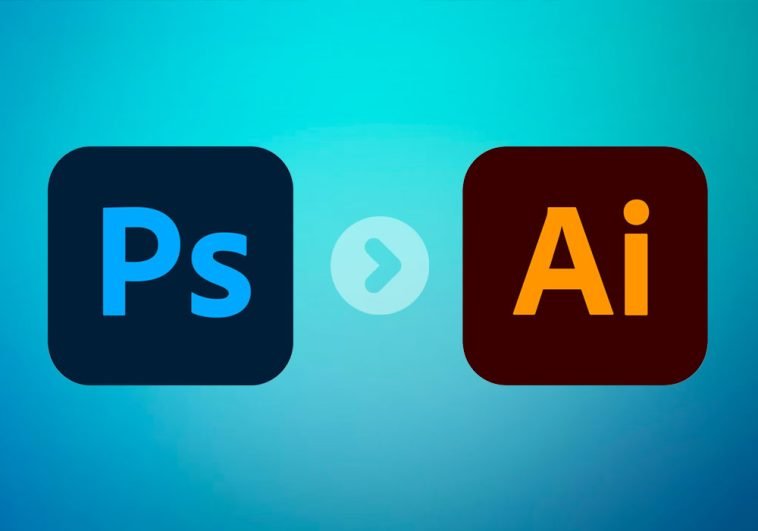Introduction.
Designing your own custom t-shirt can be an exciting and creative endeavour. Whether you want to showcase your unique style, promote a brand or event, or simply express your creativity, Adobe Photoshop provides a versatile platform for designing stunning t-shirt graphics.
In this guide, we will walk you through the step-by-step process of designing a t-shirt in Photoshop.
Designing a t-shirt involves careful consideration of layout, colours, typography, and graphics. We will start by discussing the importance of planning and conceptualizing your t-shirt design.
Understanding your target audience, defining the key message or theme, and visualizing the overall style will guide your design choices and ensure that your t-shirt effectively communicates its intended purpose.
Next, we’ll delve into the specific techniques and tools in Photoshop that will enable you to bring your t-shirt design to life.
So, let’s dive in and uncover the techniques that will elevate your design skills and enable you to create standout t-shirt graphics using Adobe Photoshop.
How Do I Design a T-Shirt In Photoshop?
With Adobe Photoshop, you have a powerful tool at your disposal to create stunning t-shirt designs that make a statement.
Whether you want to create a t-shirt for personal use, promote a brand, or sell your designs, Photoshop provides the flexibility and versatility needed to bring your ideas to life.
In this article, we will guide you through the step-by-step process of designing a t-shirt in Photoshop.
1. Plan Your T-Shirt Design.
Before diving into Photoshop, take the time to plan and conceptualize your t-shirt design. Consider the purpose of the t-shirt, your target audience, and the key message or theme you want to convey.
Sketch out your ideas, visualize the layout, and determine the colour scheme that best represents your vision.
Having a clear plan in mind will guide your design choices and ensure that your t-shirt effectively communicates its intended purpose.
2. Set Up Your Canvas.
Launch Adobe Photoshop and create a new document by going to the “File” menu and selecting “New.”
Specify the dimensions for your t-shirt design, keeping in mind the actual dimensions of the t-shirt you will be printing on.
Ensure that you set the resolution to a suitable value, such as 300 pixels per inch (PPI), for high-quality print output.
3. Design the Front and Back of the T-Shirt.
Start by designing the front of your t-shirt. Consider the placement of key elements such as logos, text, or graphics.
Use Photoshop’s selection tools, shape tools, and drawing tools to create or import your design elements.
Experiment with different layer styles, blending modes, and effects to add depth and visual interest to your design. Once you are satisfied with the front design, create a new layer and design the back of the t-shirt.
Consider incorporating additional elements or continuing the visual theme from the front. Pay attention to the balance and overall composition of the design.
4. Select Fonts and Typography.
Choose fonts and typography styles that complement your design and align with the message or theme of your t-shirt. Select a font for headlines or key text that stands out and is easily readable.
Experiment with different font sizes, styles, and arrangements to create a visual hierarchy and emphasis. Consider the placement and orientation of the text to enhance the overall design.
5. Incorporate Graphics and Illustrations.
Integrate graphics, illustrations, or custom artwork into your t-shirt design to make it visually appealing and unique.
Use Photoshop’s drawing tools or import existing graphics to add visual interest to your design. Consider the style and aesthetics that best represent your message or brand.
Experiment with colour overlays, adjustments, or filters to enhance the visual impact of your graphics.
6. Apply Colors and Effects.
Colour choice plays a crucial role in the overall impact of your t-shirt design. Select a colour scheme that aligns with your design’s theme or brand identity.
Experiment with different colour combinations and gradients to create visual interest and evoke the desired emotions.
Apply colour adjustments, blending modes, or filters to enhance the overall look and feel of your design.
7. Fine-Tune and Refine.
Take the time to fine-tune your t-shirt design. Pay attention to details, check for spelling or grammatical errors, and ensure that the layout is visually balanced.
Seek feedback from others or take a break and revisit your design with fresh eyes to make necessary refinements.
Make use of layers, adjustment layers, or masks to make non-destructive edits and easily experiment with different variations.
8. Prepare for Printing.
Once you are satisfied with your t-shirt design, it’s time to prepare it for printing. Consult with your chosen printing service to ensure that you meet their specific requirements for file format, colour mode, and resolution.
Save your design as a high-resolution file, such as a PDF or TIFF, and include any necessary bleed and safety margins to avoid any cropping during printing.
Conclusion.
Designing a t-shirt in Photoshop allows you to showcase your creativity and create personalized garments that reflect your unique style.
By following the step-by-step instructions in this article, you’ll be equipped with the knowledge and techniques to design outstanding t-shirts that stand out from the crowd.
Remember to plan your design, set up the canvas, design the front and back of the t-shirt, select fonts and typography, incorporate graphics and illustrations, apply colours and effects, fine-tune your design, and prepare it for printing.
With practice and experimentation, you’ll master the art of t-shirt design in Photoshop and create garments that make a statement and reflect your individuality.






GIPHY App Key not set. Please check settings